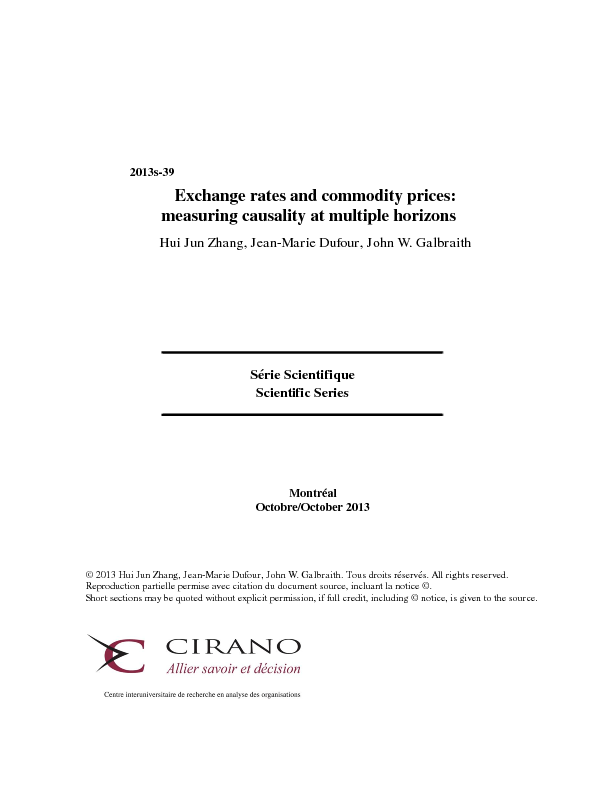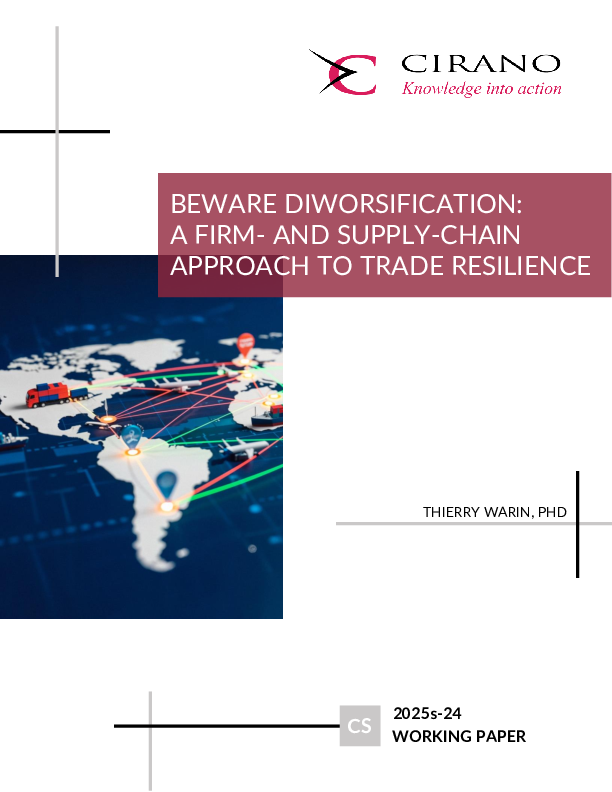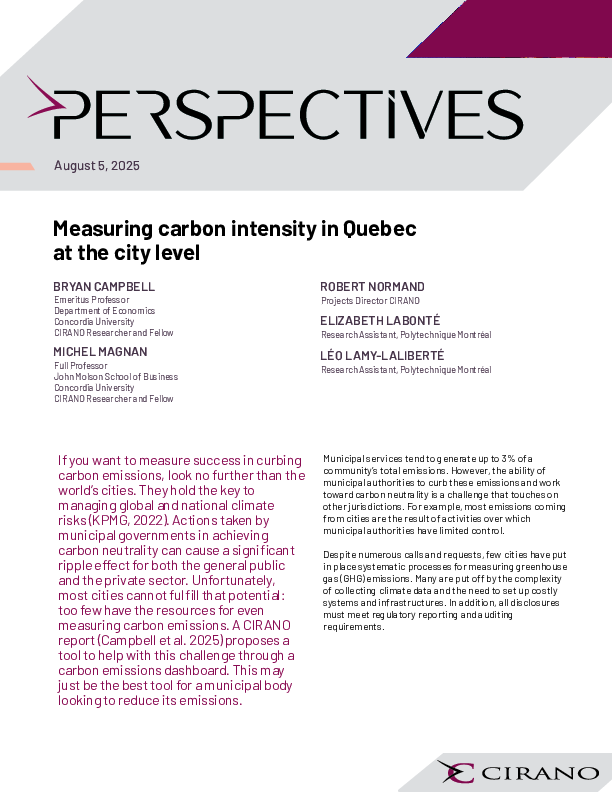Exchange rates and commodity prices: measuring causality at multiple horizons
Understanding and measuring the relative roles of different causal channels between commodity prices and exchange rates has important implications in financial decision making, especially for market participants with short horizons. From a macroeconomic perspective, this can also be useful for interpreting exchange rate movements, financial market monitoring and monetary policy. Basic economic reasoning on currency demand suggests that the currencies of countries whose exports depend heavily on a particular commodity should be strongly influenced by its price, so commodity price movements should lead (Granger-cause) exchange rate movements (macroeconomic/trade mechanism). In contrast, the present value model of forward-looking exchange rates suggests reverse causation, i.e. exchange rates should Granger-cause commodity prices (expectations mechanism). We examine empirically the causal relationship between commodity prices and exchange rates, using data on three commodities (crude oil, gold, copper) and three countries (Canada, Australia, Chile), over the period 2000-2009. To go beyond pure significance tests of non-causality and to provide a relatively complete picture of the links, measures of the strength of causality for different horizons and directions are estimated and compared. Since low-frequency data may easily fail to capture important features of the relevant causal links in volatile financial markets such as foreign exchange and commodity markets high-frequency (daily and 5-minute) data are exploited. Both unconditional and conditional (given general stock market conditions) causality measures are considered, and allowance for dollar effects is made by considering non-U.S. dollar variables. We identify clear causal patterns: (1) Granger causality between commodity prices and exchange rates is visible in both directions; (2) it is stronger at short horizons, and becomes weaker as the horizon increases; (3) causality from commodity prices to exchange rates is stronger than causality in the reverse direction across multiple horizons: the ratios of causality measures in two different directions can be quite high (for example, as high as 5 or 10 in favor of causation from commodity prices to exchange rates), especially at short horizons; (4) eliminating dollar effects weakens causality from exchange rates to commodity prices, and reveals a more definite pattern where causality from commodity prices to exchange rates dominates across multiple horizons. In contrast with earlier results on the non-predictability of exchange rates, we find that the macroeconomic/trade-based mechanism plays a central role in exchange rate dynamics, despite the financial features of these markets.
[ - ]




